9 hallway decorating mistakes we're all likely making (and how to fix them)
Hallway decorating mistakes, you say? You're probably guilty of at least one without even realising it!
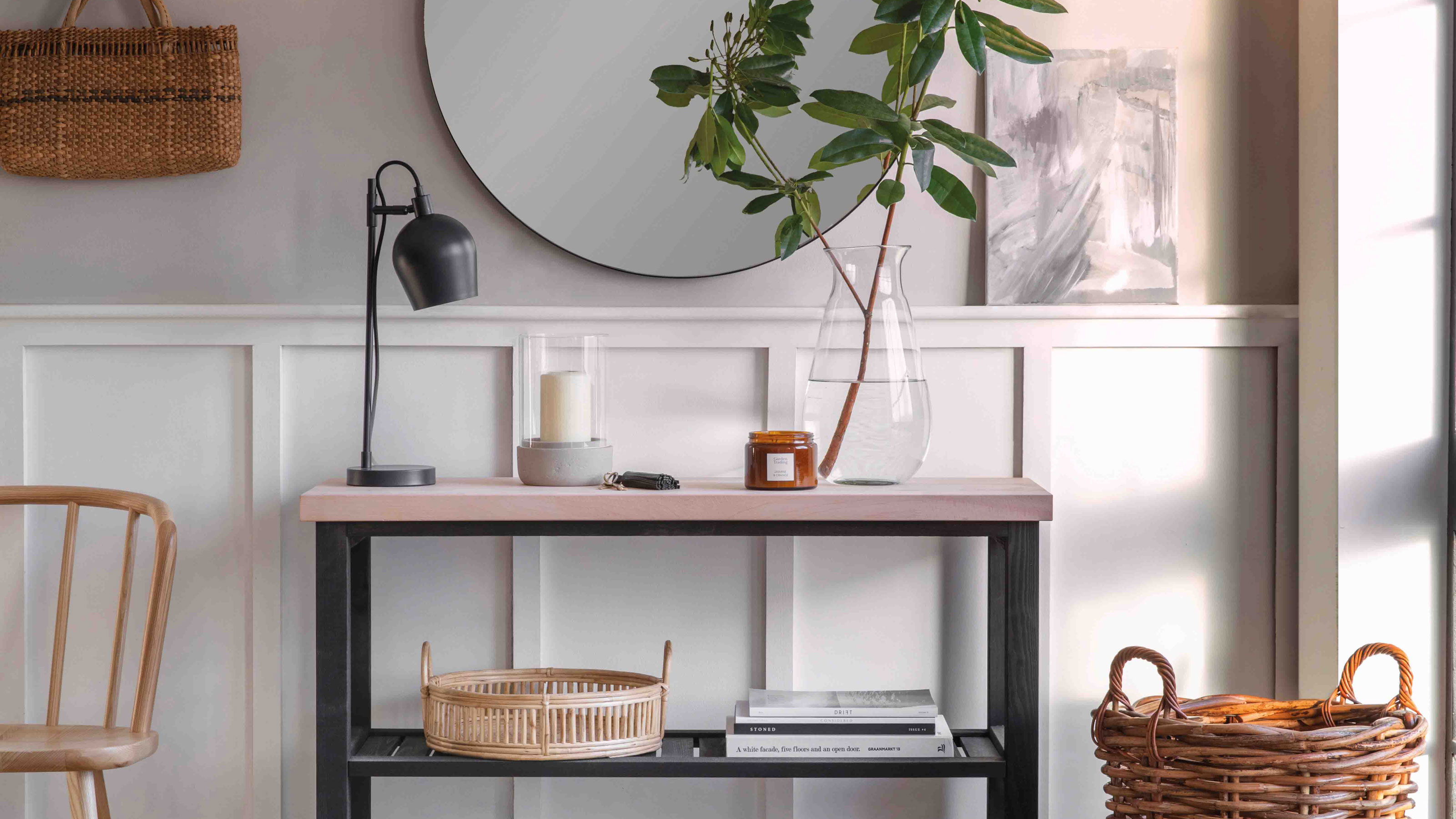

When it comes to hallway decorating mistakes, we're probably all a bit guilty of at least one, if not more. Yes, it’s a cliché, but first impressions do count, yet our hallways are so often overlooked. But worry not - once you've been made aware of any mistakes you may have made without realising it, they're super easy to rectify.
It's true that a hallway is a transitional space and while you may not spend a lot of time in yours, it still needs to be both practical and functional. But that doesn't mean it can't look beautiful, too.
There are certain key decorating areas for hallways that need to be addressed... and addressed in the right way. Sure, you need to invest in storage, flooring and lighting but if you don't execute these the correct away, you run the risk of reducing all your hard work (and money spent) to produce a poorly designed space.
Here, we've honed in on the mistakes that people tend to make when decorating their hallway, flagging up the issues, and suggesting better alternatives. We chatted with a variety of experts for their suggestions on how to make the most of your hallway, creating a space that works hard and sets the style for what’s beyond.
The most common hallway decorating mistakes - and how to avoid them
1. Choosing the wrong flooring
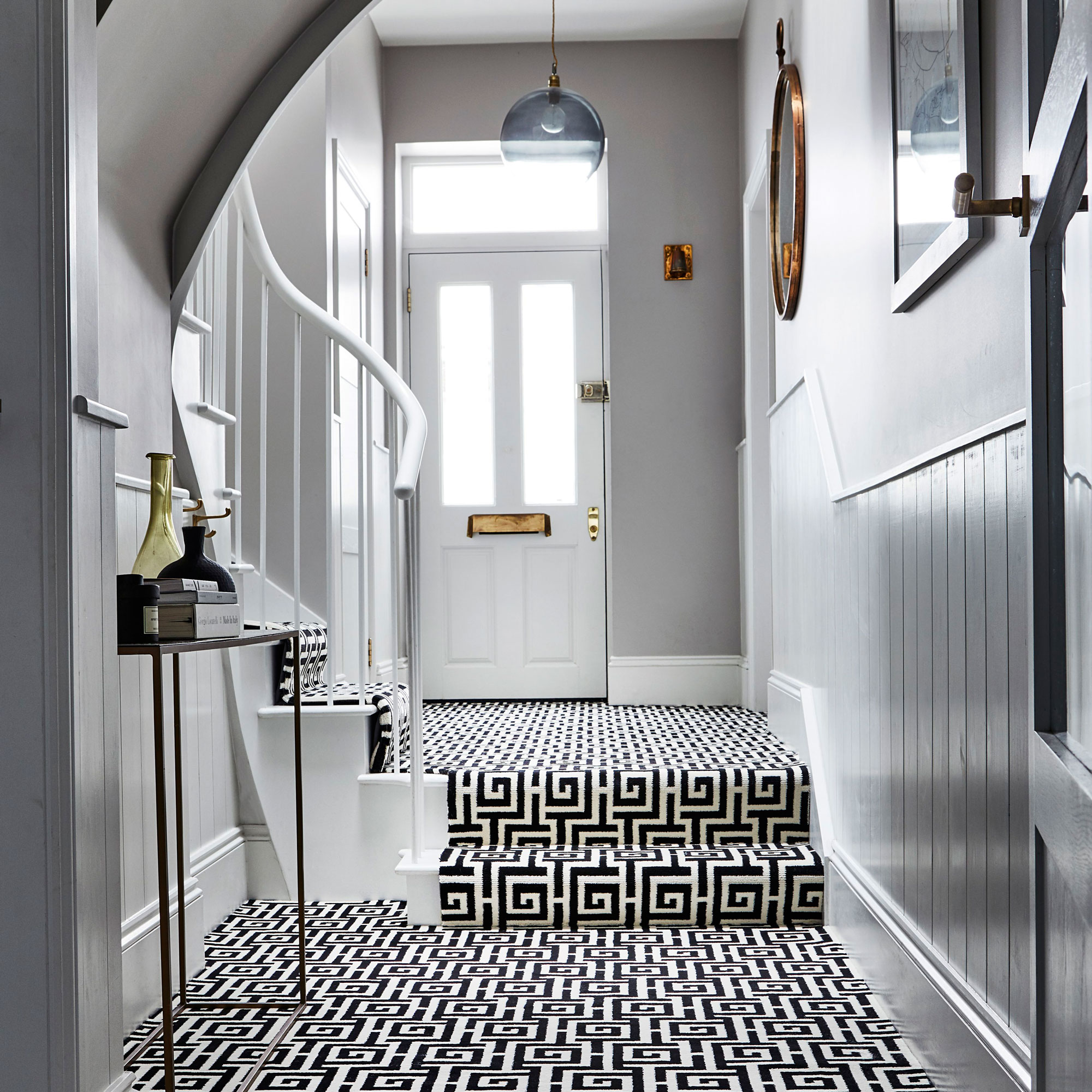
A hallway is a busy spaces and the flooring you choose for it has top be able to hold up to the traffic. Look for a practical hallway flooring idea, so you can be safe in the knowledge that your floor will withstand the increased footfall.
'Even with a strict ‘shoes off’ policy, there’s no escaping the fact that the hallway floor is where dirt arrives and can be easily trodden in,' warns Emily Dunstan from the buying team at Heal's.
'Depending on how much traffic your hallway gets, there are a few different things you can do. Forget light coloured tiles or laminate and opt for patterned tiles or dark wood floors. They won’t show marks as easily and are simple to sweep, mop and vacuum,' she advises.
If you choose to go for a dark or patterned floor, keeping the rest of the space light and bright is the best option for contrast.
Grant Robertson, Interior Design Leader for IKEA UK and Ireland agrees. ‘While a light and airy decor can help make your hallway seem bigger,' he says 'working with the floor or the ceiling - a patterned floor tile for instance - can help to make a welcoming space and also create an illusion of more depth.'
‘Carpets aren’t so resistant to wet and muddy shoes and high traffic,’ says Camila from Cor London. ‘On the other hand, wood flooring and porcelain or stone tiles are ideal,’ adds Grant. ‘A flat-woven rug will add warmth and personality to a hallway, while still being easy to clean.’
But it's the little extras that may save your floor from wear and tear. 'Don’t forget to add a hard-wearing hallway runner and doormat to finish off the look,' advises Emily from Heal's.
2. Providing no shoes storage
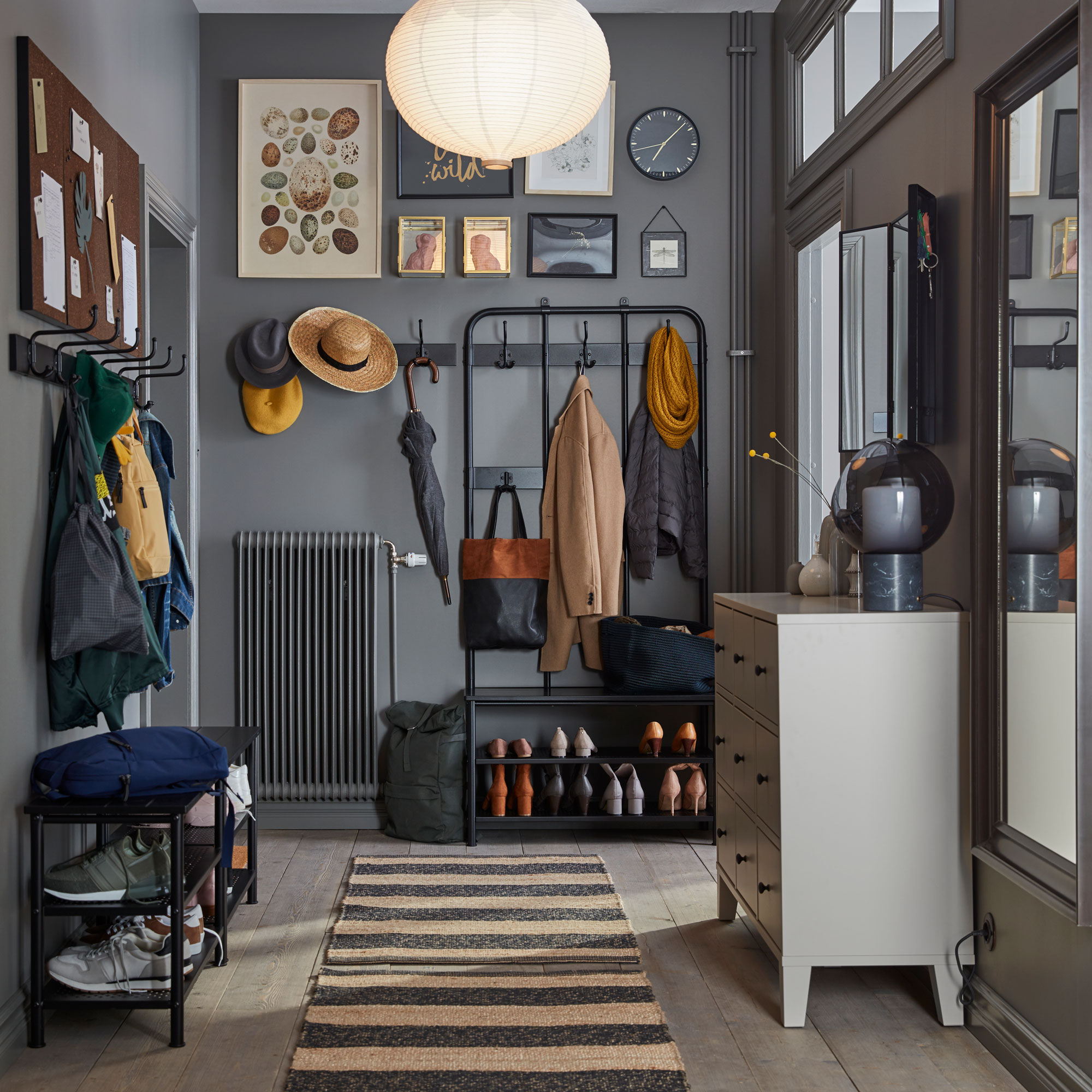
Anyone which a child or children knows the daily drama of discovering a hallway littered with shoes. But if you don't provide your kids with a space in which to store them, how else are they to be encouraged to stash them out of sight?
'Not only are unorganised shoes unsightly, they can also be a trip hazard. Ensure you have enough storage for everyone in the home to have a couple of pairs of shoes in the hallway, plus room for guests to leave theirs when they arrive,' advises Emily from Heal's.
For a smart hallway shoe storage solution, she suggests: 'Add bench seating as a further incentive for shoes to be left at the door. Why not opt for an option where the bench is also the storage?'
Grant from Ikea believes that post-pandemic, benches offer more than just a space to sit and remove shoes. ‘Previously unused areas are being stretched, by using the space under the stairs for a desk or adding a bench or chair, not only to sit and pop shoes on, but somewhere to rest and contemplate.'
Get the look: Pinnig coat rack with shoe storage bench, £80, IKEA
3. Underestimating how many coat hooks you need
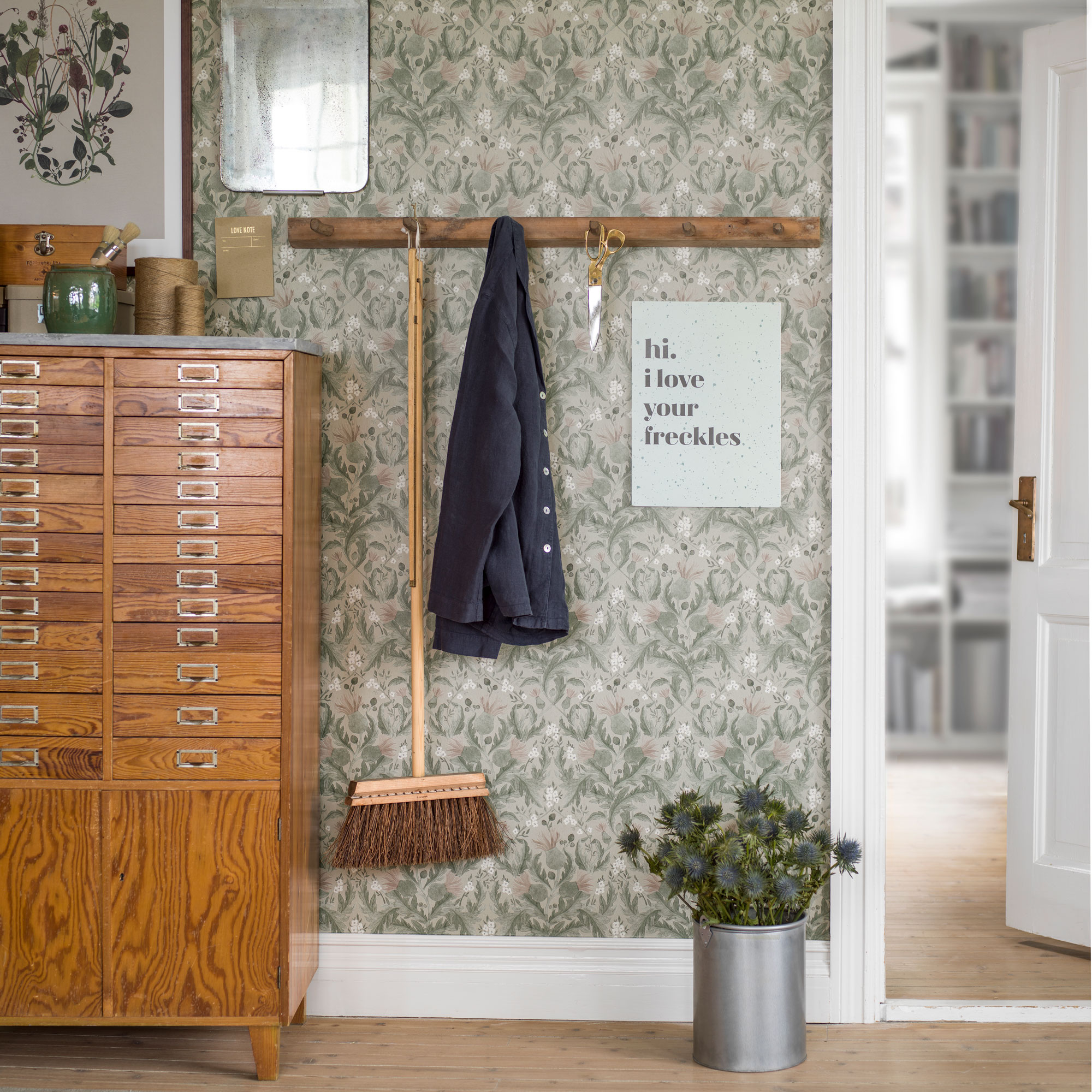
How many coats do you own? More than one we'll bet, and how many of those are in your hallway right now?
Not that we're encouraging a pile up of coats, but we are saying be mindful of providing enough hooks. There are plenty of useful hallway storage ideas for garments to avoid that look of one or two hooks overspilling with a mountain of coats.
Emily agrees, advising: 'Rather than letting coats pile up in the hallway, add as many hooks as you can so you can comfortably hang and retrieve coats.'
Don't want them in plain sight? Close them off. 'I’d try to keep coats behind closed-off storage, when possible,' explains Camila de Oliveira Rodrigues, founder of Cor London, 'but if not, have them in a hidden corner or at least behind a door. Nothing is more unpleasant than walking into a home only to stumble into a load of chunky coats.’
‘If you have children, it’s a good idea to incorporate low-level storage or hooks,’ suggests Grant from Ikea. ‘It allows them to help themselves and learn to put things away.’
For a similar peg rail, try: Shaker oak coat rack in Natural, £35, John Lewis & Partners
4. Thinking that small equals dull
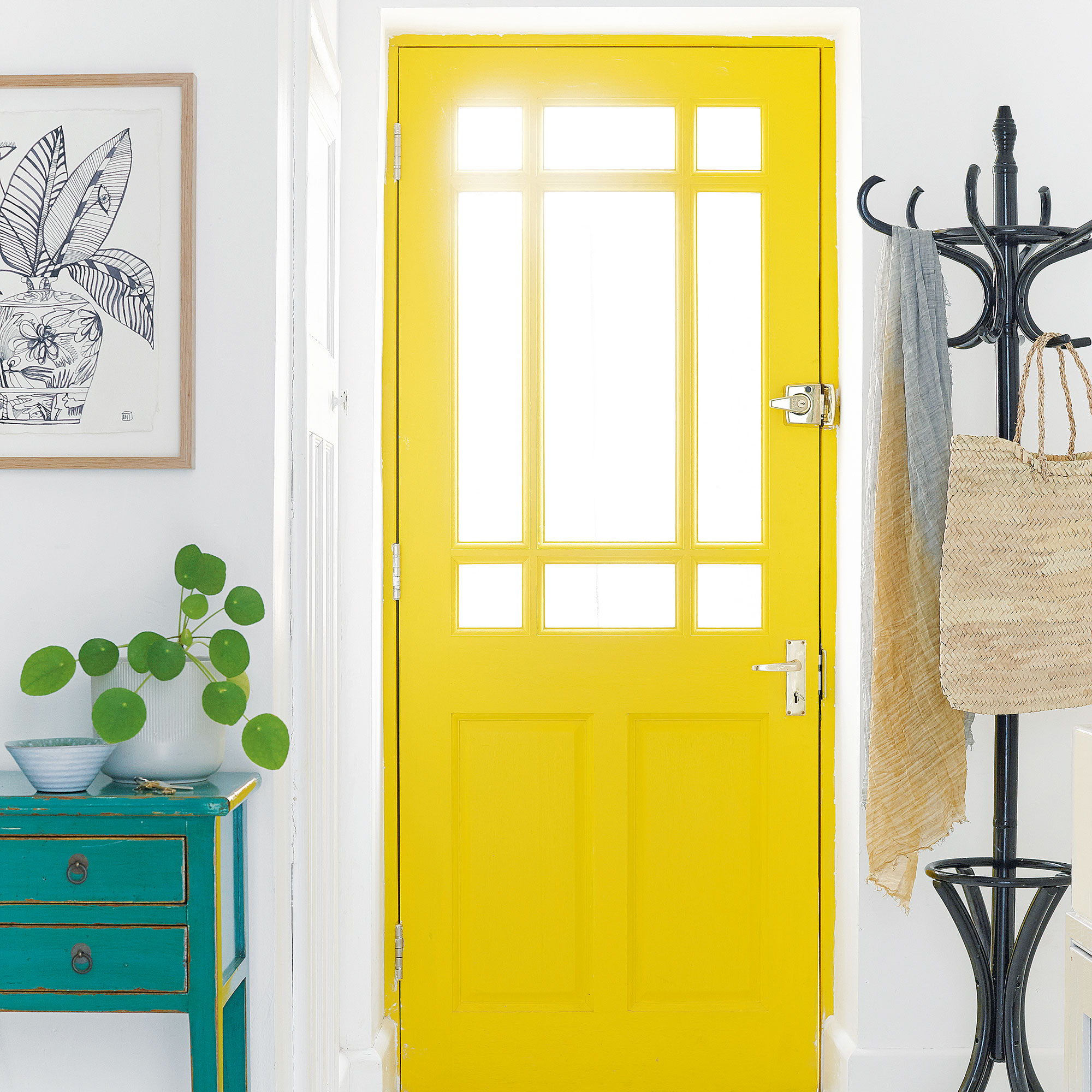
'A small hallway doesn’t have to mean a dull hallway. Nor do you have to stick to white paint to make it feel brighter and bigger,' advises Emily from Heal's. 'Don’t be afraid to experiment with colour, especially in a light-starved space.'
‘What you choose is personal, but I’d go for wow and statement making, especially as it’s a room you walk through, so you can play with it a lot more,’ says Camila from Cor London.
‘Having that colour story to start with creates flow,’ adds Paloma Harrington, Founding Director of the Home Staging Association. ‘The secret is to select two or three main colours, then add variations of these to different spaces with neutrals between, to connect all the tones.’
'Confident use of a bright colour such as yellow creates a welcoming and vibrant space, adds Emily.' If you don’t want to go all out and paint your walls bright yellow, try adding a few bold accessories such as hooks or benches to get a similar feel.'
Alternatively you could try painting the inside of your front door a bright yellow, so your hallway is a daily source of visual joy.
5. Providing poor hallway lighting
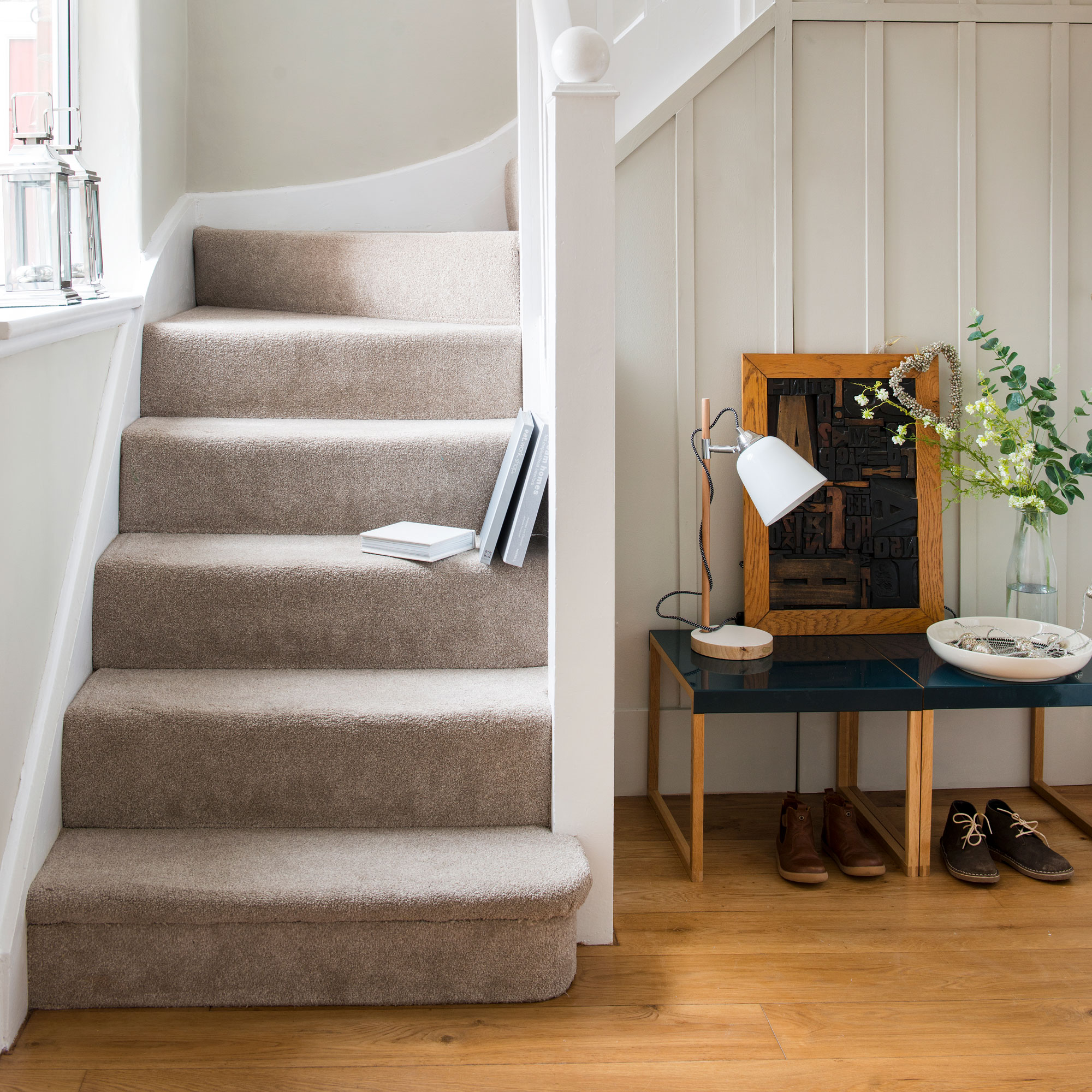
The right hallway lighting ideas are key for making any hallway space bright and inviting. A dark and dingy hallway can be easily transformed with carefully positioned lighting.
For instance, directional wall lights can highlight a beautiful ceiling, while pendant lighting can be really effective in making a smaller space feel much bigger.
'A single pendant light can have the opposite effect, leaving too many shadows and patches of darkness,' Emily explains. 'Instead, opt for multiple pendant lights running the length of your hall. This will draw the eye into the space and feel much warmer and inviting.'
‘Hallways are often light-poor,’ says Paloma from the Home Staging Association, 'yet you want to create a bright first impression. Try a colour that lights up the space, ideally a natural, then add texture and accessories to bring life into the room.’
Camila from Cor London suggests going back to basics: ‘Look at the bulb’s lumens – the light’s output. It could be as simple as changing the light source. If not, then add a table and/or floor lamp.’
Get the look:Hector Bibendum table lamp with red flex, £275, The Conran Shop
6. Decorating with hard-to-clean paint
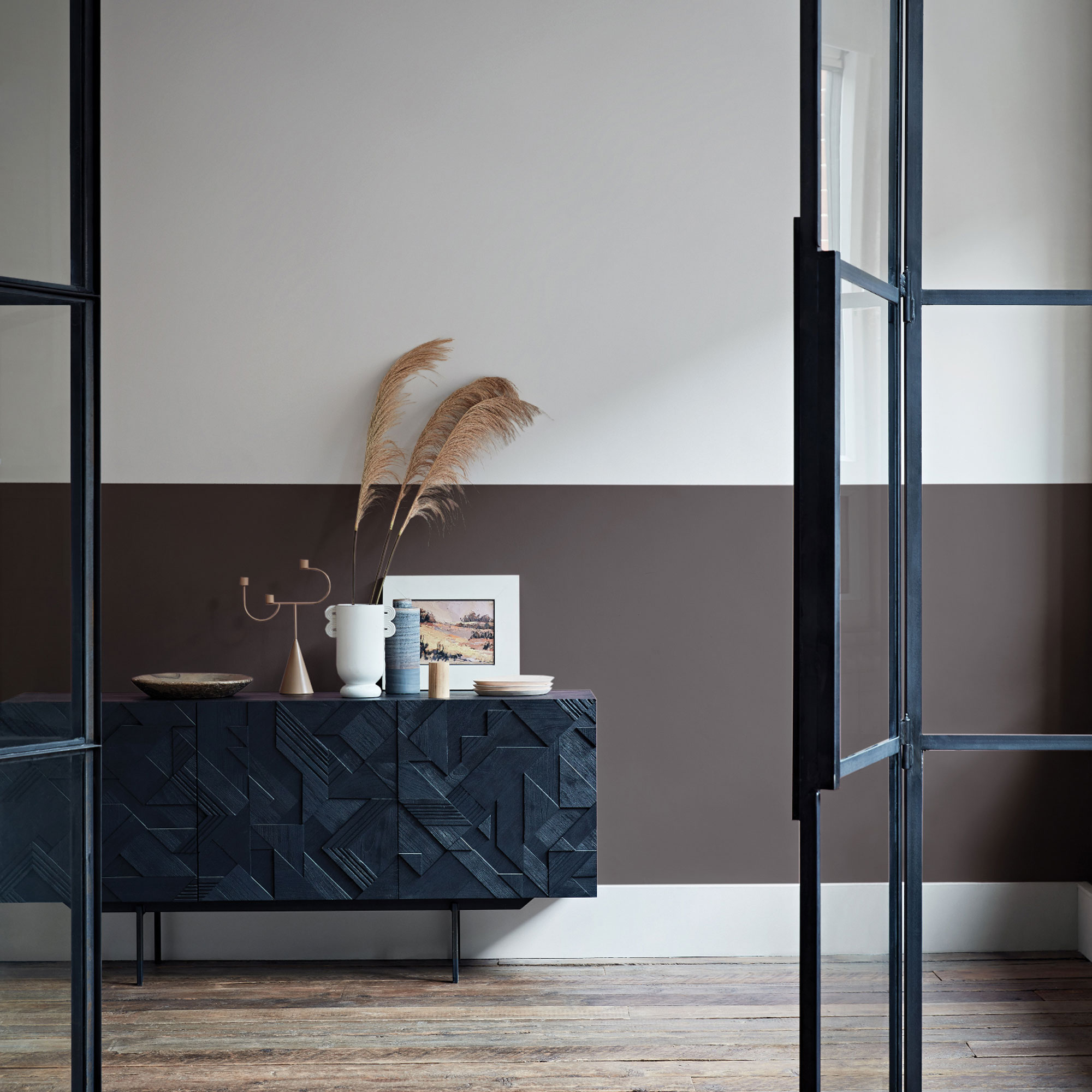
In this high-traffic area, it’s worth investing in quality scrubbable or wipeable paint. This way, any muddy splashes or fingerprints can be easily wiped away.
If you're dead set on having a white hallway, why not split the difference and paint the way below dado height in a dark shade?
Alternatively, wood wall panelling ideas can help to add a layer of protection to keep your walls in good condition. Aim to choose panelling that suits both the age and history of your property.
Get the look:Wall in Crafted by Crown flat matt interior wall in Work of Art £32 for 2.5l, Homebase
7. Not making the most of the light
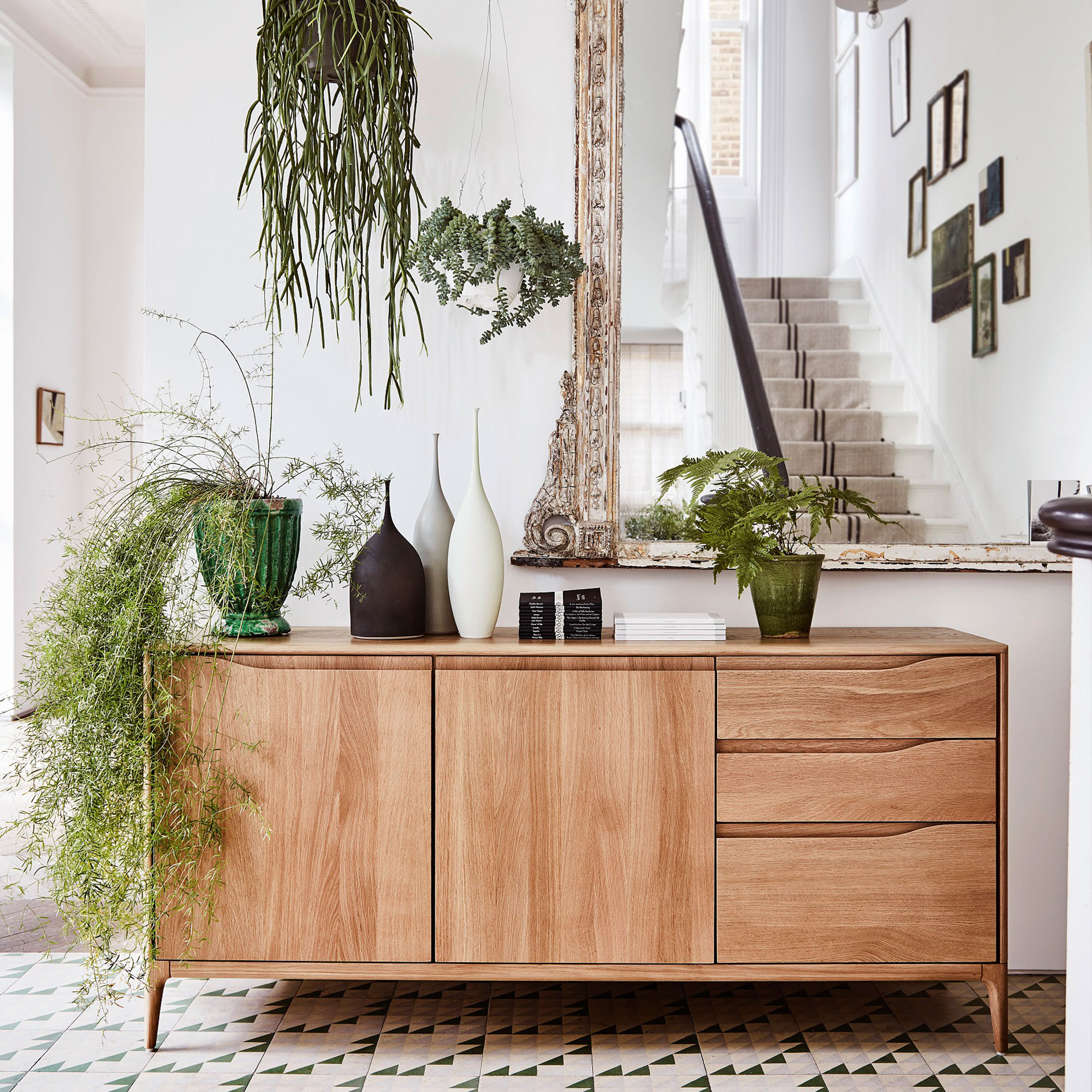
If you don't already have a hall mirror idea in your space, then you're clearly missing a trick. This simple accessory could be all your small entranceway needs to be more impactful and well-dressed.
'As well as opening up smaller areas and serving decorative purposes, mirrors can have practical benefits, too,' suggests Sabrina Miller, Buying Director at Heal's. 'Pieces such as our Brunel mirror double up as storage. Boasting a coat hook and shelves – perfect for keeping a decluttered look, whilst maximising light through the space.'
Get the look: Brunel lean mirror with hanging space, £299, Heal's
8. Thinking wallpaper is a no-go for hallways

Wallpaper is a way to wow with walls, and where could it be more important to wow than the hallway. Impress guests with your decor prowess as soon as they enter the house. While it can be a mistake to think hallway wallpaper is off limits, you do need to be mindful of the size of the space.
If your entranceway is generous then you have much more freedom with design choice. Smaller spaces need to be more considered.
Expert Alex Whitecroft, Head of Design at I Want Wallpaper has a solution! Alex suggests: 'Reflective wallpaper is always an excellent choice. Not only is it a fantastic way to create a wonderfully dynamic feeling through patterning and texture, but it can reflect up to twice as much light!'
'When it comes to your walls, wallpaper can add a whole new dimension to the way light interacts with your space,' Alex adds. 'It can bring subtle yet powerful elements like texture, patterns, reflection and contrast into the mix, adding a whole new dynamic to consider and play with in a way that’s often lost with painted surfaces.'
Camila from Cor London is also a big fan of using wallpaper in the hallway. ‘It's a fabulous way to create something unique and it can trick the eye if necessary, by making your space feel cosier or more prominent, or even distracting from storage items.’
9. Not decorating it in sync with the other rooms
‘So many of us decorate one room at a time, and it’s easy to lose sight of how a room works with the rest of the house,’ explains Paloma from the Home Staging Association. ‘Always try to see the big picture, thinking holistically, and considering how you can carry those unifying features from one space to the next.’
‘Try adding colour references in between rooms; if your living room is styled in navy, then pop a navy coat on your coat rack in the hallway, as it will make people anticipate what’s coming next,’ explains Paloma. ‘Creating a flow, while keeping things exciting, is guaranteed to get your home into the buyers’ top three if you are getting ready to sell.’
‘It’s vital to have the main colour(s) of your scheme in the first room of your home,’ Camila from Cor London adds, ‘but use them cleverly so they don’t over-clutter. For example, introduce the colours in a striped doormat – horizontal to give an impression of greater width – or on panelling to draw the eye up and add depth.’
How do you avoid entryway decorating mistakes?
That's easy. Carefully read through out list above and if any of them sound familiar or you're sure you're guilty of them, make plans to remedy the situation (or situations!) as soon as possible.
How do you make a hallway look more expensive?
The trick is not so much in the things you put in it, as in the decor you choose. Offset a white walls with dark flooring or visa versa. Don't be afraid to embrace pattern in the space - for instance, wallpaper or patterned tiles will give the space a visual lift and - as it's considered a brave choice, it's bound to be a talking point for any guests.
How do you make a hallway look good?
The two things that will ensure your hallway looks great are the keep it clean and tidy. A cluttered hallway is an eyesore and a dirty one, even worse.
How do you make a narrow hallway look wider?
Declutter – keep only the items that can’t be stored elsewhere in the hallway is the best place to start before planning any narrow hallway ideas. An insider design tip to make a narrow hallway look wider is to add horizontal or diagonal lines with a striped rug, flooring or wallpaper.
Painting all the walls and the ceiling in one shade – preferably a rich one – will always make a space feel bigger. It is also worth considering playing with the light and reflections – use mirrors, lighting and even gloss paint.
Our final trick for making a narrow hallway look wider is to paint the furthest wall in a bold colour to distract from the area’s width.
Get the Ideal Home Newsletter
Sign up to our newsletter for style and decor inspiration, house makeovers, project advice and more.

Ginevra Benedetti has been the Deputy Editor of Ideal Home magazine since 2021. With a career in magazines spanning nearly twenty years, she has worked for the majority of the UK’s interiors magazines, both as staff and as a freelancer. She first joined the Ideal Home team in 2011, initially as the Deputy Decorating Editor and has never left! She currently oversees the publication of the brand’s magazine each month, from planning through to publication, editing, writing or commissioning the majority of the content.
- Jennifer MorganContributor
- Tamara KellyContributor
-
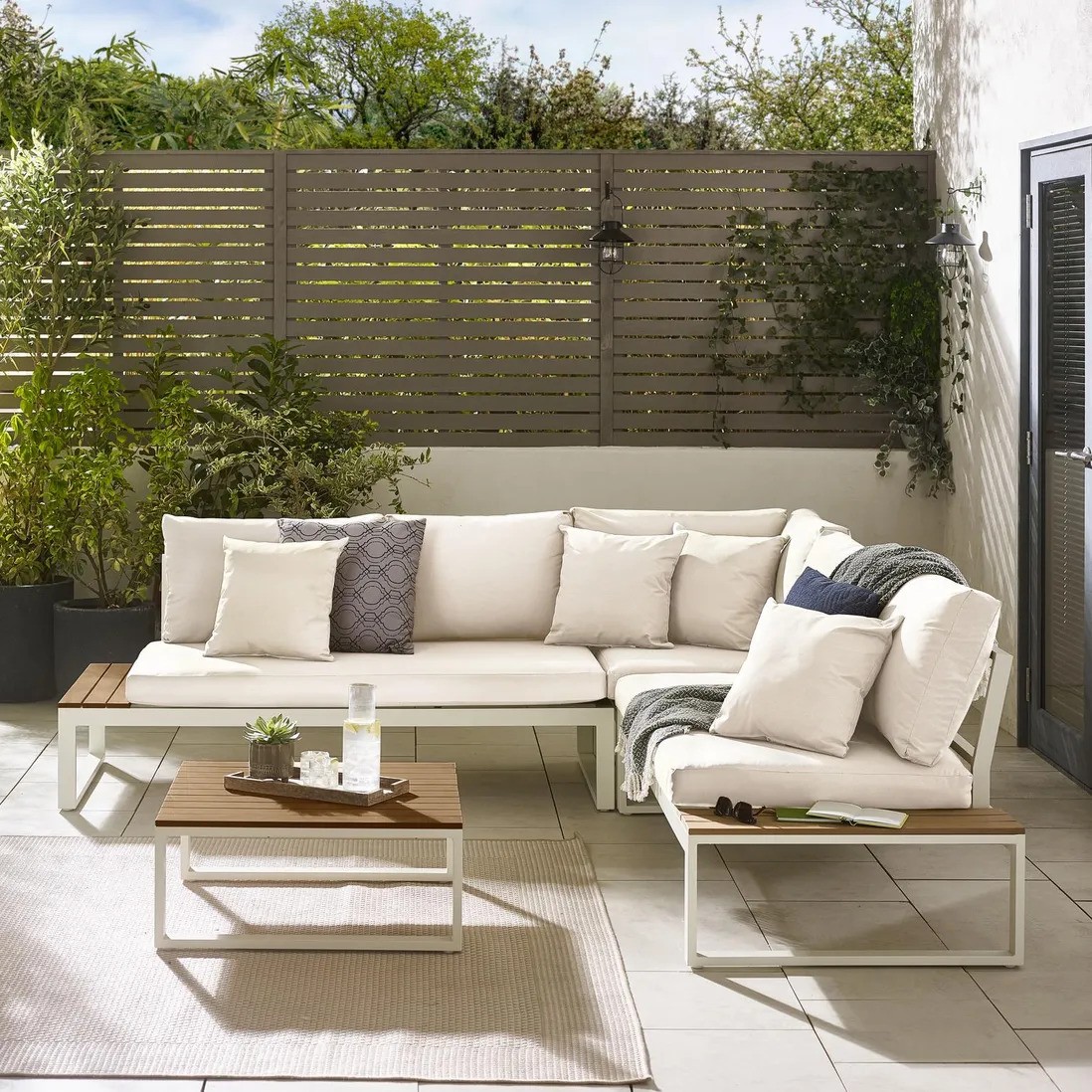 I'm a Homes Editor with expensive taste, but Debenhams just made me do a double-take with this bargain designer-look outdoor sofa
I'm a Homes Editor with expensive taste, but Debenhams just made me do a double-take with this bargain designer-look outdoor sofaThis is the last place I thought I'd find my dream outdoor sofa
By Rebecca Knight
-
 15 ways to add kerb appeal to your home – experts share what really works for a stylish first impression
15 ways to add kerb appeal to your home – experts share what really works for a stylish first impressionMake your home's exterior pop with these ideas
By Jenny McFarlane
-
 Aldi is selling a robot lawn mower for under £200 - it's one of the cheapest on the market
Aldi is selling a robot lawn mower for under £200 - it's one of the cheapest on the marketI never thought I'd see 'Aldi' and 'robot mower' in the same sentence...
By Kezia Reynolds